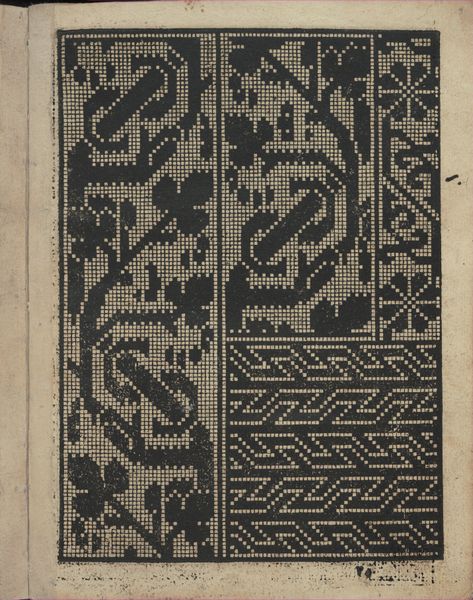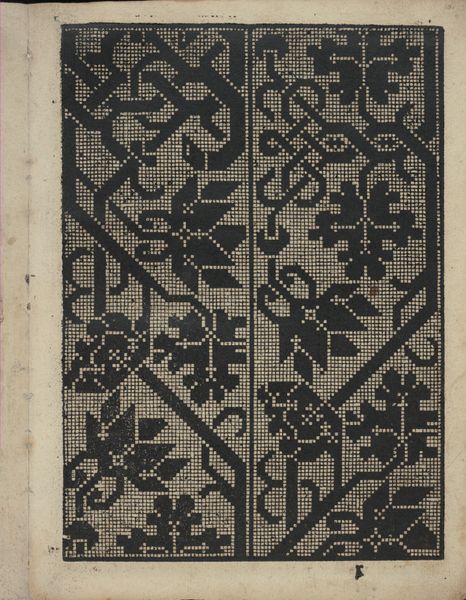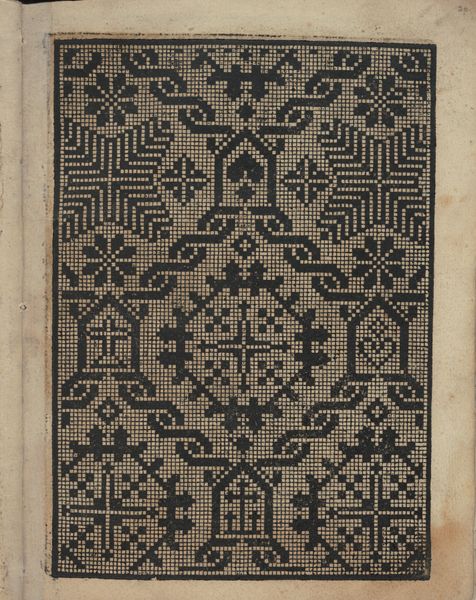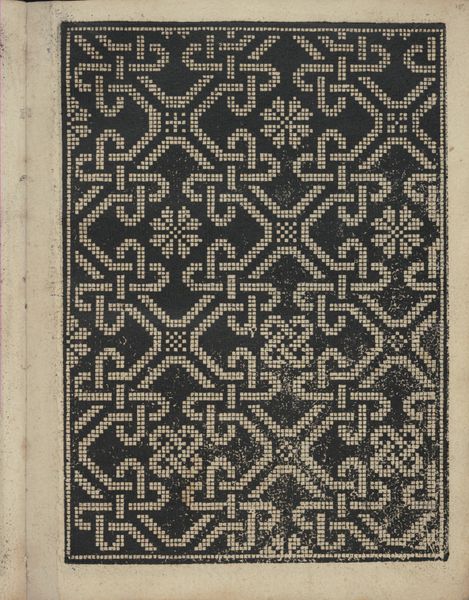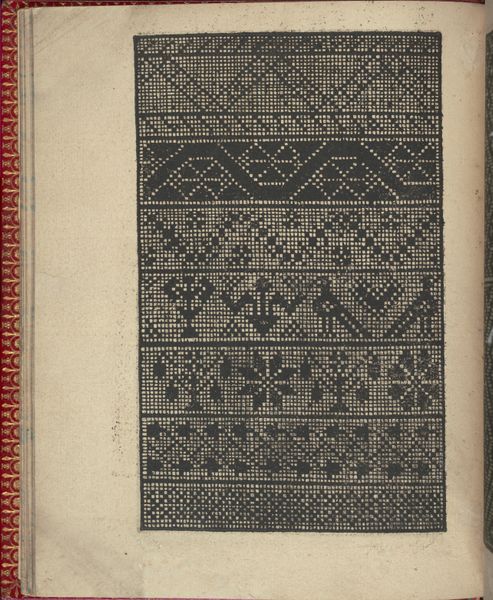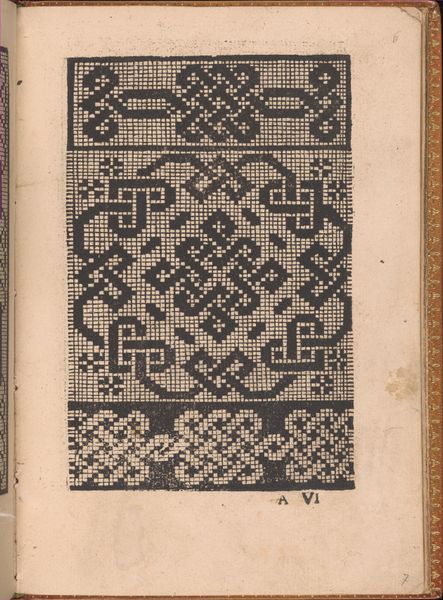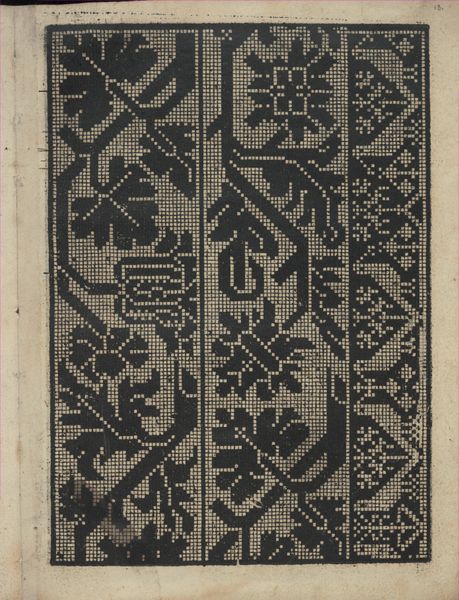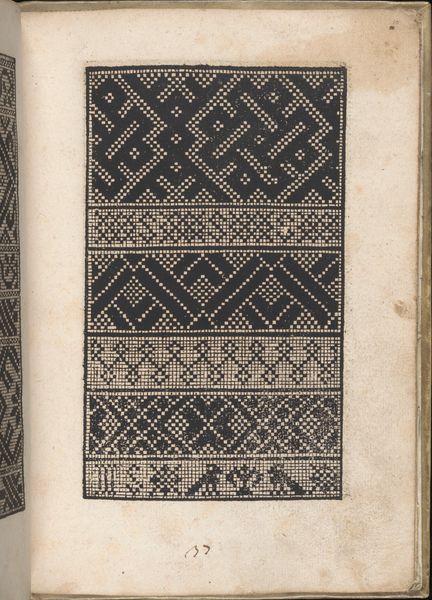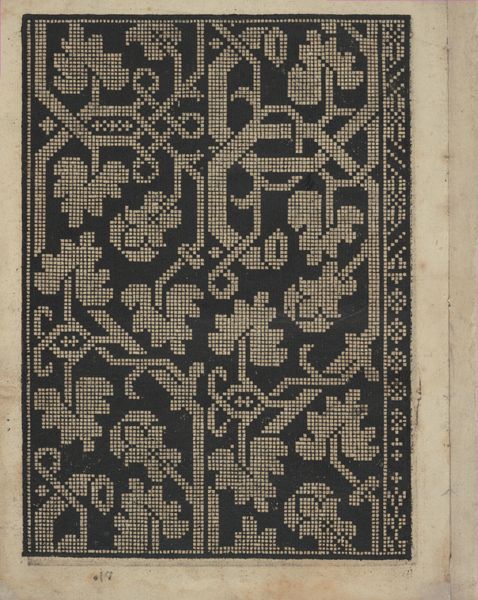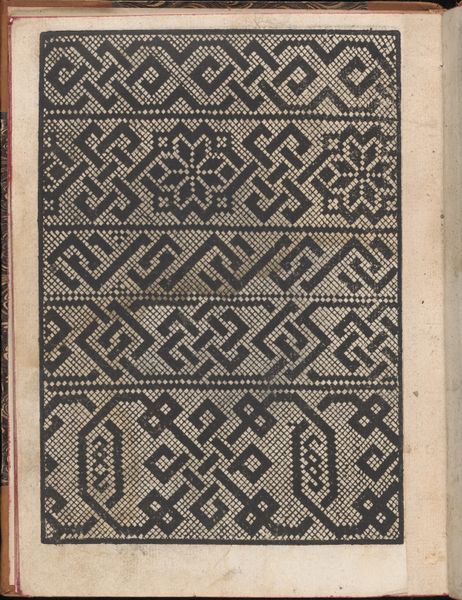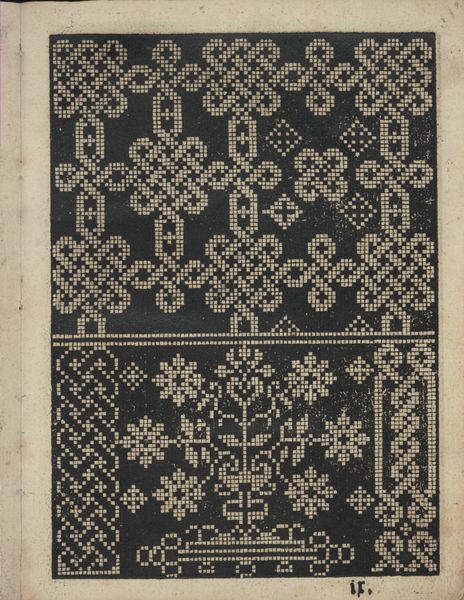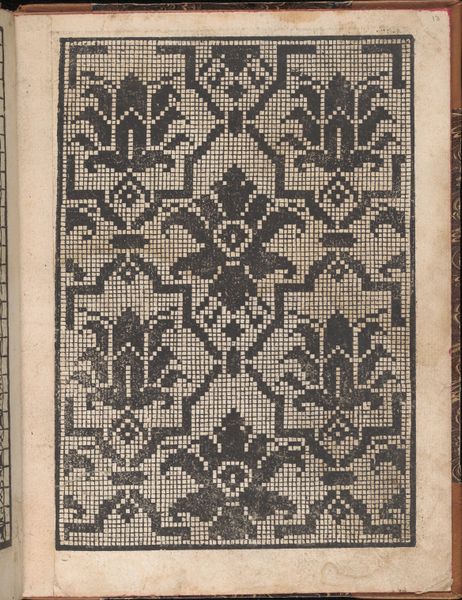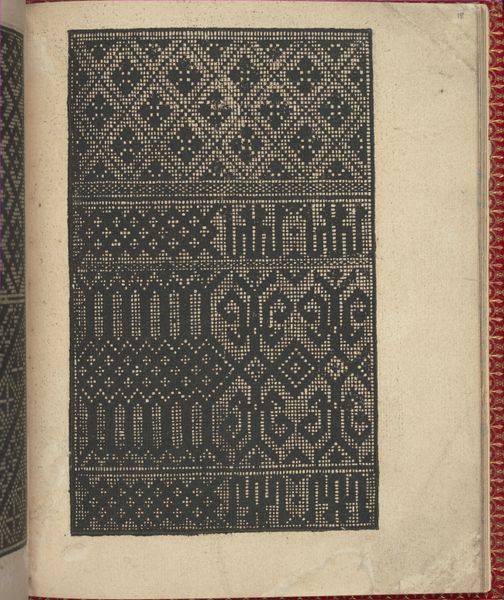
Libbretto nouellamete composto per maestro Domenico da Sera...lauorare di ogni sorte di punti, page 11 (recto) 1532
0:00
0:00
drawing, print, paper, woodcut
#
drawing
# print
#
book
#
woodcut effect
#
paper texture
#
paper
#
geometric
#
woodcut
#
line
#
decorative-art
#
italian-renaissance
Dimensions: Overall: 8 1/16 x 6 5/16 in. (20.5 x 16 cm)
Copyright: Public Domain
Curator: The contrasting geometries create an interesting tension. The entire page has this striking woodcut effect. Editor: We’re looking at a page, specifically page 11 recto, from "Libbretto nouellamete composto per maestro Domenico da Sera…lauorare di ogni sorte di punti", dating to 1532. It's attributed to Domenico da Sera and can be found at the Metropolitan Museum of Art. Curator: Ah, so this wasn't conceived as a piece of fine art but something more functional? It seems more about pattern and precision, rather than personal expression. It looks like something you’d use as a guide or blueprint. Editor: Precisely. The "Libbretto" served as a pattern book. This print is actually a woodcut on paper, showcasing designs intended to be translated into needlework and lace. The grape and vine motif to the left is mirrored on the right by other abstract shapes. Curator: That stylized grape vine! Vines in many cultural traditions represent abundance and connection. They speak to prosperity, domesticity, and creativity. This takes the language of flowers and distills it to mere shapes. Editor: Yes, I am thinking about its broader cultural context. It allowed women, specifically, access to participate in this expanding culture of visual art and creative knowledge during the Italian Renaissance. Curator: While the decorative elements root the work in its period, the abstractions feel surprisingly modern, almost digital in their pixelated rendering. These shapes and textures still resonate deeply. Editor: By the very virtue of this domestic framework for women, and seeing it now, the needlework is elevated to an intellectual activity—not only craftsmanship. These objects carry more symbolic value and social consequence. Curator: What began as craft becomes art. The book becomes a conduit for women to gain cultural and economic capital. Editor: Absolutely. It forces us to think about who had access to knowledge, and how. These are tangible artifacts of everyday experience in 16th-century Europe.
Comments
No comments
Be the first to comment and join the conversation on the ultimate creative platform.
